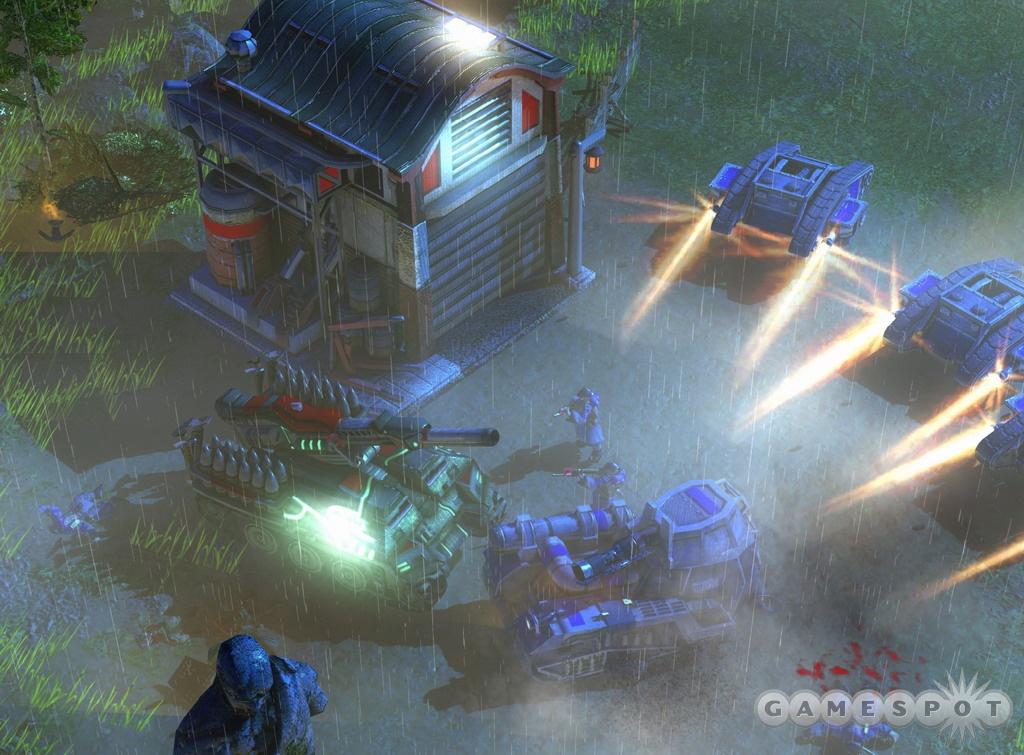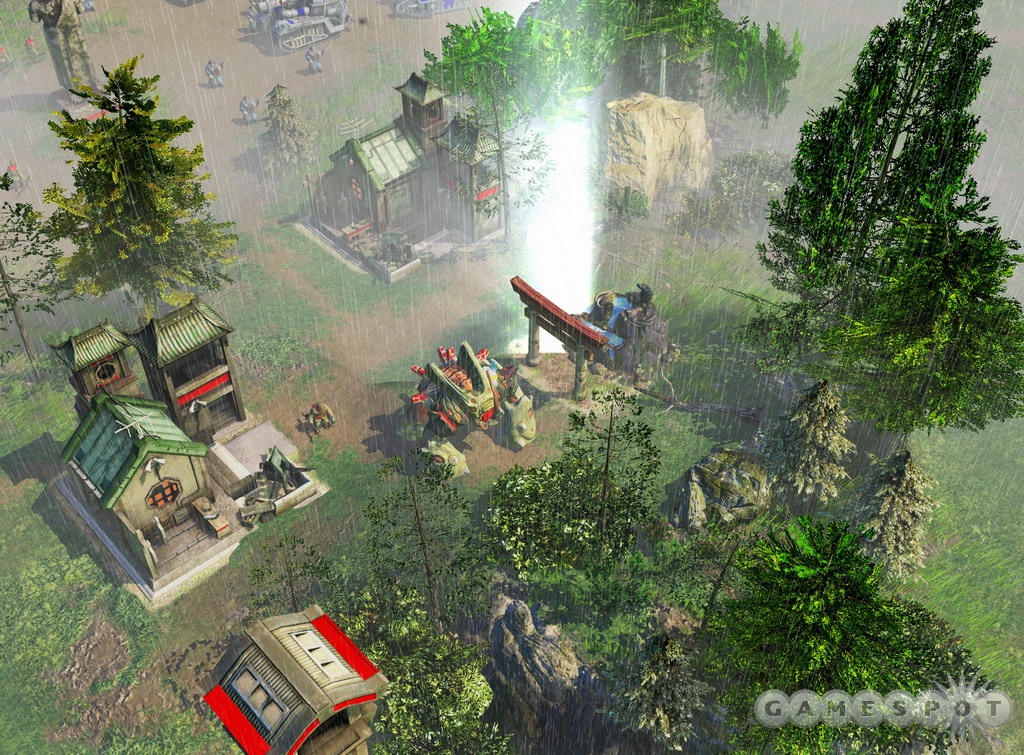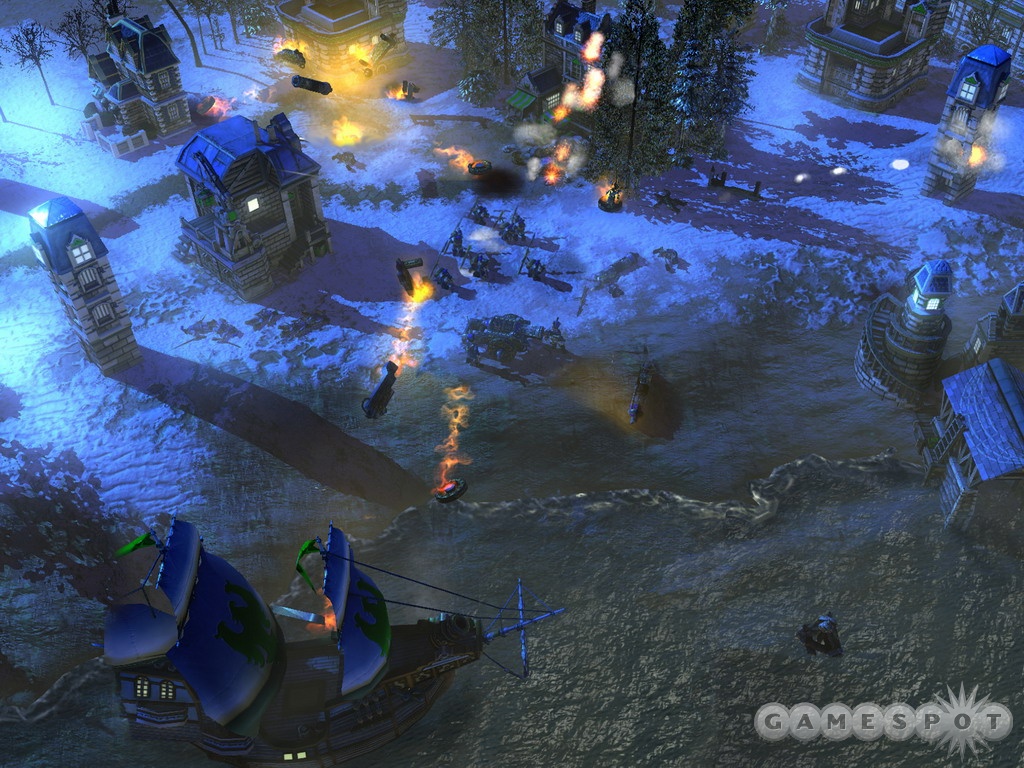Empire Earth III Exclusive Multiplayer Hands-On
We've got some of the very first details on how this real-time strategy sequel is shaping up.
Conquering the world is a lot of work, as many strategy players have learned over the years. In 2005's Empire Earth II, that task got really complicated, as the game featured an incredible amount of civilizations, technologies, units, and options. Realizing that its creation had gotten a bit too out of control, Mad Doc is now working on a more streamlined and stylized Empire Earth, one that keeps the strategic depth while being easier and friendlier to play. We got some of the very first hands-on time with the game recently for an early report on how Empire Earth III is shaping up. Please note that we played an early, work-in-progress version of Empire Earth III. Therefore, what we saw did not represent final gameplay, and details will almost certainly change as the game is balanced and tuned before it ships late this year.
This early look at Empire Earth III gave us our first glimpse at the game's three regions in action. Yes, that's right: "Instead of having 15 slightly different civilizations, we've really said the Far East, the Middle East, and the West are going to be very different in our vision of history to each other," said Mad Doc CEO Ian Davis. "They all have entirely different tech trees [and] entirely different units." That was certainly on display during our multiplayer games, as we got to play each of the regions. Keep in mind that while there are three regions in the game, there aren't just three factions. For example, there can be multiple factions, like Britain, France, and Germany, but all of those would belong to the West region, and each would start out with technologies that reflect its specialties, such as Britain and naval power.

The West is perhaps the most standard faction, as it relies on the traditional real-time formula of having builders construct its buildings. The Middle East faction doesn't rely on builders. Instead, when it constructs a new building a caravan is built. You can then order the caravan to set up the building on the map. This also means that you can order buildings to pack it up and move, which can be useful when you're on the offensive, as you can shift your unit-producing structures closer to the front. The Far East faction has its own unique twist on building, as any regular infantry unit can build a structure, negating the need for builders. This can be highly effective, as Far Eastern factions can seize a territory and immediately get to work building structures in it, while the Western and Middle East factions have to truck in builders or caravans from another province.
The differences between the factions go well beyond their building styles. The West relies on traditional western units, such as longbowmen and tanks, before transitioning to its futuristic units, giant robotic war machines. The Middle East has lots of guerilla units and even the Republican Guard. One thing that we didn't see was any kind of Middle Eastern armor. At least Middle Eastern buildings have a built-in attack value, which means they're very difficult to rush, particularly in the early game as the buildings can repel and even defeat small attacks. Finally, the Far East faction had many eastern units, such as samurai, as well as futuristic, genetically engineered creatures.
There are only two resources to worry about in Empire Earth III: wealth and raw materials. Wealth basically represents money, and it is generated by building a market and staffing it with workers; the more workers assigned to the market, the more money, or wealth, it makes. Raw materials represent things such as stone and wood, and they're generated simply by building a warehouse next to a resource pile on the map. The more workers you assign to a warehouse, the faster it accumulates resources. Workers now are directly tied to a building, so you don't build individual workers and assign them. In other words, you can't build a worker at one warehouse and transfer him to another. With that said, it is possible to kill workers, since they do venture outside to gather resources, which makes them vulnerable to a quick raid, a time-honored method of crippling a real-time strategy economy.

Most units require only resources to be built, though more powerful units require raw materials and wealth. What wealth is most important for is for researching unit upgrades and technologies, as well as advancing toward the next epoch. And here's where a lot of strategy will come into play. Do you "tech up" quickly in order to gain access to more powerful units? Or do you raise a huge army and try to get the military advantage on your rivals? If you have a limited amount of wealth, do you spend it on a critical unit upgrade or do you research a new unit entirely? Another question might involve whether you expand into neighboring territories. Yes, the territories system from Empire Earth II does return in the sequel. Basically, each map is divided into territories. To control a territory, you have to eliminate any rival city centers and construct your own in it. Once you do that, you can build the rest of your structures in that territory. While there may be multiple resource piles in each territory, you will be able to build only one market per territory, so it will be important to seize neighboring territories in order to expand your economy.
As we noted previously, wealth plays a critical role when it comes to advancing to the next epoch, or era, in the game. The big news on this front is that there are just five epochs, down considerably from the 15 in Empire Earth II. This consolidation allows each epoch to have a much more distinctive character and feel. In Empire Earth II, it was hard to tell the difference between, say, epoch 12 and epoch 13. Now, when you shift from the medieval to the colonial epoch, you'll know it. The buildings and architecture change dramatically, and the units that you can build are a lot more advanced than before. At the same time, the designers are balancing the game so that you don't gain an overwhelming advantage simply by advancing to the next epoch before your rivals. You can spend so much advancing that you can leave yourself vulnerable to attack. And even if you do tech up, having a few highly advanced units doesn't guarantee you victory if you face hordes of slightly less advanced units.
The combat system in Empire Earth III is fairly similar to its predecessors and other real-time strategy games. One of the nice new features, though, is the way airpower is handled. You can build air units--mainly helicopter or hover units--but fixed-wing aircraft are tied to an airbase. When you build an airbase, you can call in different types of missions and the aircraft will conduct them, but you can't really select aircraft individually. This eliminates the need for trying to click on fast-moving units that are flying all over the map. It's a system that's similar to the one in Rise of Nations, and it makes air power a lot easier to use.

If you don't want to wage war, you can wage peace thanks to the diplomacy system. One of the neat ways diplomacy comes into play is when dealing with native tribes, which are indigenous to certain maps and act as a neutral third party. However, you can turn that third party into a partner. If you can make a native tribe swear fealty to you by using the diplomacy system to offer it raw materials, wealth, or military units, you gain a valuable ally that gives you line of sight of everything it sees, as well as one that attacks all your enemies. We had fun using the fealty system to conduct a war of proxy against another human player. A native tribe swore fealty to us and was attacked by another player. Though we were at peace with that player, we used the diplomacy system to transfer military units to the tribe. Thus, the tribe took control of the units and kept the other player occupied while we focused on building our economy and advancing in epochs. We would then build more advanced military units and transfer them to the tribe's control, causing huge amounts of grief for our opponent.
Ultimately, Empire Earth III is turning out to be a much more interesting game than its predecessor, mainly because the choices that you make are more significant. One of the biggest problems with Empire Earth II was that you could research dozens of minor technologies that had little impact on the overall gameplay; it was clutter for clutter's sake. Empire Earth III offers much more concrete choices, and it's easier to understand the consequences of your decisions. And that makes the task of conquering the world a lot more enjoyable.
Got a news tip or want to contact us directly? Email news@gamespot.com
Join the conversation